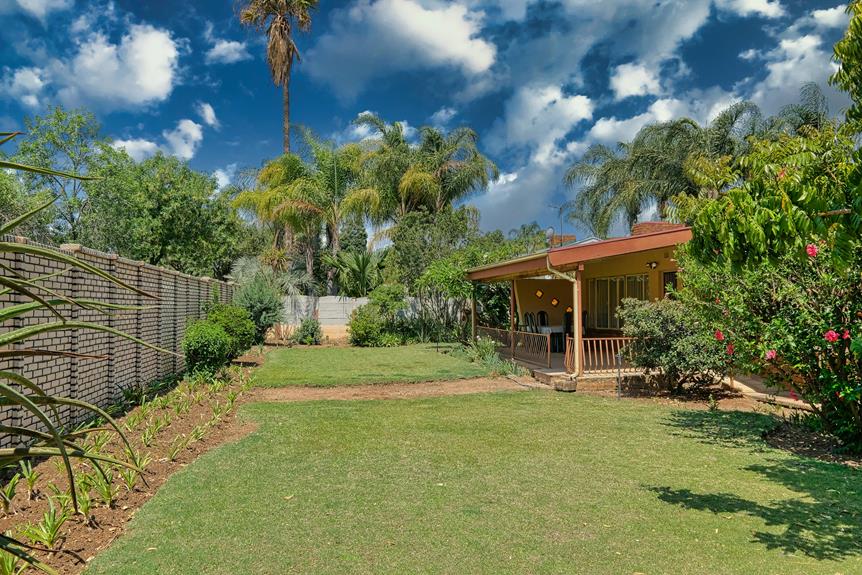Have you ever wondered if you can actually grow cilantro in your AeroGarden? You might be intrigued to know that with the right setup and care, you can cultivate this aromatic herb right in your kitchen. Ensuring you manage the specific needs like light exposure, water quality, and nutrient levels is key to your success. But, there's a catch—while the process might seem straightforward, there are nuances to growing cilantro that could affect your harvest. Stick around to uncover the essential tips and tricks that could make all the difference in your indoor gardening venture.
Key Takeaways
- Yes, cilantro can be grown in an AeroGarden using herb-specific pods and non-GMO seeds.
- Ensure cilantro receives 14-16 hours of light daily for optimal growth.
- Maintain water pH between 6.5 and 7.2 and add nutrients every two weeks.
- Keep ambient temperature around 65-70°F to prevent bolting and encourage healthy growth.
- Regular harvesting before flowering helps sustain plant health and prolongs its productive phase.
Understanding Cilantro's Growth Requirements
Cilantro thrives when you provide it with six to eight hours of light daily and maintain a temperature between 65 and 70 degrees Fahrenheit. You'll want to guarantee that your AeroGarden's settings are adjusted to these conditions to maximize the herb's growth. Precise control over these variables allows you to create the perfect environment, preventing common issues like bolting, where cilantro grows too quickly and starts to seed, losing its flavor.
You should also monitor the water quality in your AeroGarden. Cilantro prefers a slightly acidic to neutral pH level, ranging from 6.5 to 7.2. Regularly checking and adjusting the pH balance isn't just a suggestion—it's a necessity for robust growth. Installing a simple pH meter in your AeroGarden will help you maintain this balance effortlessly.
Furthermore, cilantro has a relatively shallow root system, so it doesn't require deep water levels. Adjust the water depth accordingly, making sure it's sufficient but not excessive. This level of control ensures that the roots receive the best amount of moisture without becoming waterlogged, which can lead to root rot.
Benefits of Growing Cilantro in an AeroGarden
Growing cilantro in an AeroGarden offers you the convenience of having fresh herbs at your fingertips, enhancing your cooking with vibrant flavors and fresh, aromatic garnishes. This method puts you in complete control over the growing environment, allowing you to adjust settings such as light, water, and nutrients based on the specific needs of cilantro. You'll avoid the unpredictability of outdoor gardening, including pests and varying weather conditions.
By cultivating cilantro indoors, you can guarantee it's free from harmful chemicals, providing you and your family with healthier, organic produce. The AeroGarden system is also incredibly efficient, using less water and space than traditional gardening. You'll save time and effort, as there's no need for soil preparation or weeding, and you can harvest cilantro right when you need it, ensuring maximum freshness and flavor.
Moreover, the AeroGarden's automated system simplifies the process. You don't have to remember to water or fertilize regularly; the system alerts you when it's time. This hassle-free approach means you can enjoy growing herbs without the usual gardening chores, leaving you more time to experiment with your culinary creations.
Setting Up Your AeroGarden for Cilantro
To kick off your cilantro cultivation, begin by setting up your AeroGarden unit according to the manufacturer's instructions. It's important you don't skip this step, as precision here sets the foundation for your cilantro's growth.
Choose a location with a stable temperature away from direct sunlight, which can impact the unit's internal lighting system.
Once the unit is in place, make sure it's connected to a power source. Your AeroGarden's pump and lights are essential for maintaining an environment where cilantro can thrive, so test them to confirm they're functioning as expected.
You'll want to have complete control over these elements, as they directly affect the growth rate and health of your plants.
Next, fill the reservoir with water, preferably distilled to avoid any unwanted minerals that could accumulate in the system. Check the pH level of the water, aiming for a slightly acidic to neutral range, which is best for cilantro.
You can easily adjust the pH with kits available specifically for hydroponic systems.
Best Practices for Planting Cilantro
How do you guarantee that your cilantro seeds thrive in an AeroGarden? First, you've got to start with quality seeds. Opt for high-germination, non-GMO seeds to boost your chances of robust growth. You'll want to plant them in the pod labels specifically designed for herbs—these secure your cilantro has the right environment from the start.
Spacing is vital. Plant one or two seeds per pod to avoid overcrowding, which can stunt growth and reduce yield. Once you've placed the seeds, cover them lightly with the provided grow media to secure them in place but allow for easy sprouting.
Here's a quick reference table to keep these steps clear:
| Step | Detail |
|---|---|
| Seed Selection | High-germination, non-GMO |
| Pod Label | Use herb-specific pods |
| Seed Placement | 1-2 seeds per pod |
| Coverage | Lightly cover with grow media |
After planting, position your AeroGarden in a spot that maintains a stable temperature, ideally between 65-70°F (18-21°C). This stable environment will prevent stress on the plants, which is key to vigorous growth. Stick to these guidelines, and you'll set yourself up for a bountiful cilantro harvest right from your AeroGarden.
Managing Water and Nutrients
You'll need to monitor your AeroGarden's water level regularly, making sure it's always filled to the marked line. This simple step is essential; it prevents your cilantro from experiencing stress due to low water levels, which can impede growth and affect flavor. Don't let the reservoir dip below this line to maintain ideal growing conditions.
Additionally, managing nutrients is key to robust cilantro growth. Your AeroGarden kit includes a specially formulated liquid nutrient solution that's necessary for your plant's development. You'll want to add nutrients every two weeks, aligning with the device's reminder system. It's important to follow the recommended dosage—over-fertilizing can lead to nutrient burn, while under-fertilizing might leave your plants lacking.
To ensure uniform distribution, mix the nutrient solution thoroughly with the water each time you refill. This consistency in nutrient levels helps avoid any sudden changes that could stress the plants.
Monitoring Light and Temperature Conditions
After managing water and nutrients, it's important to monitor the light and temperature conditions for best cilantro growth. Your Aerogarden provides an ideal environment, but fine-tuning these factors will enhance your cilantro's health and flavor. You're in control, and understanding how these elements interact is key.
Cilantro thrives under specific light and temperature settings which you can easily manage in your Aerogarden. Here's what you need to keep an eye on:
- Light Duration: Cilantro needs about 14 to 16 hours of light each day. Make sure your Aerogarden lights are set to mimic this natural cycle.
- Light Intensity: While the default settings are generally adequate, if you notice your cilantro looking pale or leggy, consider adjusting the light closer to the plants to increase intensity.
- Ambient Temperature: Aim to keep the ambient temperature around 65-70°F. Cilantro can tolerate some variation, but extreme cold or heat may stunt growth or cause bolting.
- Avoid Direct Heat Sources: Keep your Aerogarden away from heating vents or windows with direct sun exposure that could disrupt the internal temperature balance.
Harvesting Your AeroGarden Cilantro
When's the best time to harvest your AeroGarden cilantro for maximum flavor and yield? You'll want to start picking your cilantro leaves once the plant reaches about 3 to 4 inches tall. This usually takes between 3 to 4 weeks after planting. Harvesting early and often promotes fuller, bushier growth, giving you control over yield and plant health.
To guarantee robust flavor, pick leaves in the morning when their essential oils are at their peak. Use a clean pair of scissors or pinch off leaves with your fingers, being careful not to damage the stems. This method stimulates further growth and lets you manage the plant's shape.
Here's a quick reference table to guide your cilantro harvesting:
| Week | Plant Height | Harvesting Action |
|---|---|---|
| 3-4 | 3-4 inches | Begin light harvesting |
| 5-6 | 5-6 inches | Increase harvesting, focus on larger leaves |
| 7-8 | 6+ inches | Regular harvesting, shape plant |
| 9-10 | Maintain | Consistent harvesting as needed |
| 10+ | Monitor | Harvest before flowering |
Troubleshooting Common Growth Issues
Growing cilantro in an AeroGarden isn't without its challenges; let's tackle some common growth issues you might encounter. To begin with, if your cilantro isn't sprouting, it's likely due to low temperatures or insufficient water levels. You need to make sure the environment is ideal to encourage germination.
If you're noticing slow growth or pale leaves, this generally points to a nutrient imbalance. Your cilantro craves a balanced diet rich in nitrogen and potassium, which are essential for vibrant growth and color. Check the nutrient mix and adjust according to the AeroGarden instructions to get back on track.
Here are four key steps you can take to maintain a healthy growth environment for your cilantro:
- Regularly Check Water Levels: Keep the water at the recommended level at all times.
- Adjust Lighting: Ensure your AeroGarden lights are close enough to provide sufficient energy without scorching the plants.
- Monitor Nutrient Concentration: Tailor the nutrient mix as your plants grow and their needs change.
- Maintain Optimal Temperature: Keep your AeroGarden in a warm area but away from direct heat sources.





Konnichiwa! (Hello!) I'm Pat Tokuyama, a Japanese tofu cookbook author, who travels for music, food, and adventure. If you like Japanese tea, checkout some of the newestorganic japanese tea, matcha bowls and noren and more!
** Curious about the Plant Based Japanese Cooking Club? ** Learn more here!